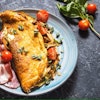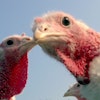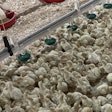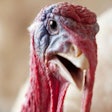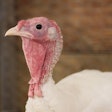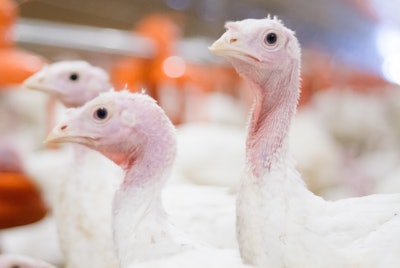
The number of hours turkeys are in darkness or in reduced lighting can affect their health and well-being, a recent study from North Carolina State University (NC State) revealed.
Allison Pullin, assistant professor of animal welfare at NC State, gave an overview of the study on April 18 at the 2024 PEAK conference in Minneapolis, Minnesota. Pullin completed this research alongside her collaborators, Jesse Grimes and Casey Nestor of NC State.
“Lighting is a major component of management that affects welfare, and light can have many different components such as intensity, color as well as the schedule,” Pullin explained. “Today, the focus is on light schedules, or photoperiod, which is the length of the number of hours or light, and the scotoperiod, which is the length of the dark period.”
Study methodology
In its study at the Talley Turkey Education Unit, NC State placed Nicholas Select hens in 16 rooms with independent light control in one of the research barns (55 hens per room).
For the first three days, all rooms were provided with continuous 24 hour lighting per the breeder guide. After that, the lighting was modified to apply the scotoperiod treatments through the end of the trial (4 rooms per treatment). One group was never exposed to darkness. The other three had respective scotoperiods of two, four and eight hours of darkness.
The turkeys were evaluated at various timepoints throughout the 12-week trial in the following areas: production performance, injury prevalence, fearfulness and eye health.
Production performance
When determining matters of production performance, hens were weighed every three weeks to determine their average body weight, body weight gain and feed conversion ratio (FCR). Also examined were mortalities and cullings with those flocks.
Pullin reported that there was “no statistical difference in weight at the end of the trial, regardless of the light period we were using.”
The hens with four hours of darkness were the lightest, with an average weight of 8.89 kilograms. Those with two hours of darkness were the heaviest, with an average weight of 9.28 kilograms, Pullin showed.
Similarly, there was no material differences in FCR among the turkeys raised with scotoperiods of differing lengths.
But when it came to mortalities and cullings, that’s when the differences became more noticeable, she said.
“The group that had the lowest mortality in that group had no dark period, and then the mortality essentially doubled once we started adding in a dark period,” said Pullin.
The groups of turkeys that had two- and four-hour dark periods had the highest incidence of moralities and cullings, she noted, at 10.5% and 11.8%, respectively. However, the birds with an eight-hour scotoperiod had a 7.3% mortality rate, which while lower than those with two and four hours of darkness, was still more than the 4.5% mortality rate for those never exposed to darkness.
Pullin said one presumed cause of mortalities or the need to cull was that the birds were subjected to injurious pecking.
“When we look at those who had a dark period, about half of the mortality and culls were attributed to pecking. Then we see that the number increases as we add more hours of darkness to the flock, so particularly when we get down to that eight hours of darkness, about three-quarters of the mortalities were attributed to injurious pecking,” she said. “So, the pecking was not only our number one reason for culls, but it makes of a greater proportion of mortality as we add more darkness.”
Injury prevalence
After the turkeys’ 12-week period concluded, the researchers examined 777 hens for injuries, both in terms of where on their bodies the injuries occurred, and the severity of those injuries.
The hens with the longest period of darkness had the most minor head and neck injuries, with 10.4% of that flock displaying some minor injury, whereas those with a two-hour period of darkness had the fewest at 6.1%.
The study showed 2.9% of those turkeys with a four-hour scotoperiod had the highest incidence of severe head and neck injuries, whereas those with the eight-hour dark period had the lowest at 1%. But when total injuries were added up, those with eight hours of darkness had significantly more injuries at a rate of 11.4%. The group with the next most total injuries was the one that had four hours of darkness, with a prevalence rate of 9.2%.
For back and tail injuries, those with the most minor injuries were in the group with four hours of darkness, at a rate of 30.1%. Those with no darkness had the fewest, with a rate of 16.4%. Those with continuous light also had the lowest prevalence of the more severe injuries at 3.8%. Those with the eight-hour period of darkness had the highest incidence of more severe injuries at 9.7%.
Pullin explained that turkeys generally peck the head and neck region for different reasons than they peck at backs and tails. When they peck the head or necks of other turkeys, they do that out of aggression or as a display of dominance, whereas pecks at the backs or tails is more a matter of “redirected foraging behaviors,” which can also be a result of a deficiency of nutrition or “something in the environment that birds are looking for to fulfill some kind of either dietary or behavioral need.”
 Allison Pullin, Ph.D.
Allison Pullin, Ph.D.
Eye health
After the 12-week period was completed, most of the birds were sent to be processed, but the researchers did hold some back so they could “do some ocular health metrics" at 13 weeks.
Those tests showed that hens reared without a dark period have enlarged eyes when compared to those who were exposed to periods of darkness. Meanwhile, the diameter of their corneas was smaller on the average, as well as a slightly smaller anterior-posterior depth.
Based off of those results, Pullin said she recommended a period of at least four hours of darkness for proper eye health.
Fearfulness
To evaluate turkeys’ fearfulness in relation to the amount of times they spend in the dark, the NC State team used two tests.
One was what was called a “wing-flapping test.” In this test, the turkeys were loosely held upright for 30 seconds to see how long and how many times they would flap their wings in an effort to escape. At the same time, they recorded the turkeys’ vocalizations.
Regardless of the birds’ photoperiods and scotoperiods, all birds on the average flapped about 15 times over “a short burst” of flapping for about two seconds. There was also no noticeable difference in which group the turkeys were part of and their vocalizations.
The other test was a novel object test, in which they placed an object in the turkeys’ environments that they had never seen before. In this case, it was a multicolored stick. This test has been used to measure fearfulness in numerous species, and the object is to see how long it takes them to approach the object, how many animals interact with it, and for how long do they interact with it.
Pointing out that turkeys are naturally curious animals, birds from every group approached the stick within 15 seconds, but those with either no dark period or only two hours of darkness took longer to actually touch it.
That reaction could be interpreted numerous ways, Pullin said.
“Is it really an indicator of fearfulness or is it related to vision processing? Possibly, it’s not necessarily related to fear,” she said.
Pullin also noted that the higher rates of injurious pecking coupled with the faster touch of the stick could also be indicative of the possibility that birds with a longer period of darkness might have had more sleep and therefore have increased activity levels.

